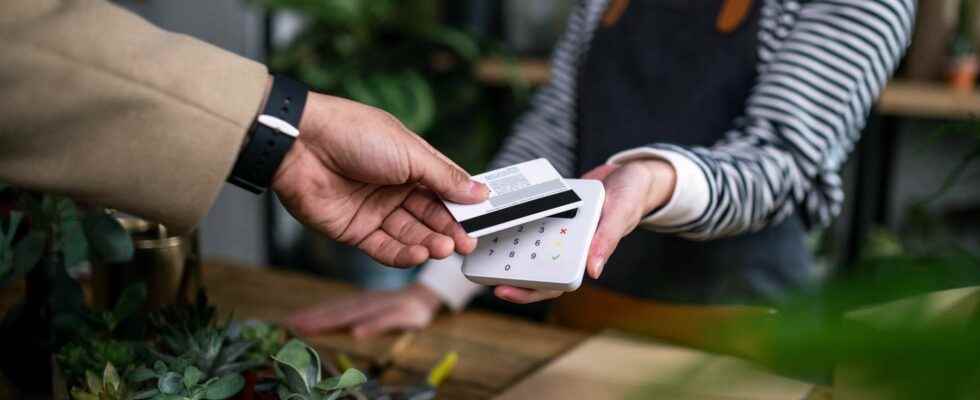According to an IFOP study dating from November 2019, contactless payment, then considered a “new means of payment”, was used by three quarters of French people. What about today ? How does it work and can it still evolve?
You will also be interested
Popular since the Covid-19 virus, contactless payment is a way to pay for purchases quickly using your credit card, phone or connected watch. This process, which appeared in the 2010s, has since been in constant progress, putting aside the traditional checks and cash.
How does contactless payment work?
Contactless payment works through a technology called NFC (Near-field Communication) without having to enter your confidential code. Payment is made as soon as the means of payment is brought within a few centimeters of a TPE (electronic payment terminal) compatible with the technology without contact. From then on, the transaction is launched and the payment is authorized if the customer has sufficient funds.
A pictogram in the form of waves indicates that a credit card works in contactless or that a TPE accepts this type of transaction. the Near-field Communication allows data to be exchanged between compatible devices such as telephones and TPEs accepting this functionality. Only the fact of approaching two supports to each other activates the technology. The use of a bank card is, to date, the means of contactless payment the most used in France. However, for this to work via a smartphone, it is necessary to register their details on a mobile application such as Apple Pay or Samsung Pay.
What are the main advantages and disadvantages of contactless payment?
The speed of the transaction is certainly the main advantage of contactless payment, which also leads to a smoother checkout process. If, since May 11, 2020 due to the Covid-19 epidemic, it has been capped at three times €50 maximum per day for Bank cards (a way to avoid fraud), contactless payment via the mobile has no ceiling except that set by the bank. The absence of contact with a surface other than its own credit card is also an advantage observed during the Covid-19 epidemic, preventing the proliferation of the virus, in particular through the keyboard of terminals.
However, it may happen that contactless by bank card is the target of hackers who, being close to a customer, can intercept his card data. Having a case that blocks the waves can then be effective in protecting yourself against them. But, as the Observatory for the Security of Payment Methods indicates in its 2020 annual report, contactless fraud is mainly the result of the theft or loss of the card, two phenomena that have decreased with successive confinements.
What future for contactless payment?
Banks such as BNP Paribas, Crédit Agricole or Société Générale have invested in new generations of cards, biometric cards, allowing data security, a way of attracting contactless refractories.
According to the Observatory for the Security of Payment Means, the share of contactless payments increased from 9% in 2019 to 19% in 2020. Still according to this organization, mobile payment, meanwhile, has made a leap 135% in 2020 compared to the previous year. Nevertheless, it represents only 2.5% of contactless payments.
In addition, the evolution of this facility of transaction used through mobiles and watches equipped with NFC technology opens the way to other perspectives. Connected objects such as rings and bracelets could well appeal to users of contactless payment!
Why are we witnessing a contactless payment trend in France and what does this entail?
According to the CB Observatory, in 2020, almost 73 million credit cards were in circulation in France. Of these, 60 million had contactless functionality. An “object” that remains close at hand, the bank card is proving to be the favorite means of payment for the French because of its practicality and its simplicity and speed of use. It is also an alternative that allows you to help with small daily expenses if the wallet remains empty.
If the Covid-19 epidemic gave a boost to contactless payment, then considered as a barrier gesture in its own right, its use did not register a drop in periods when the virus was dormant.
Through its white paper entitled The means of payment of today and tomorrow to the challenge of data protectionthe CNIL indicates that this contactless trend and therefore dematerialization means of payment, leads to new strategies on the part of major retailers. They put in place connected paths at the point of sale via a loyalty application then allowing payment via discount coupons and tomorrow, the sending of receipts in a dematerialized way “. Contactless shows the way to a path that is easier to access, more fluid, but where the question of preserving anonymity nevertheless arises…
Interested in what you just read?
